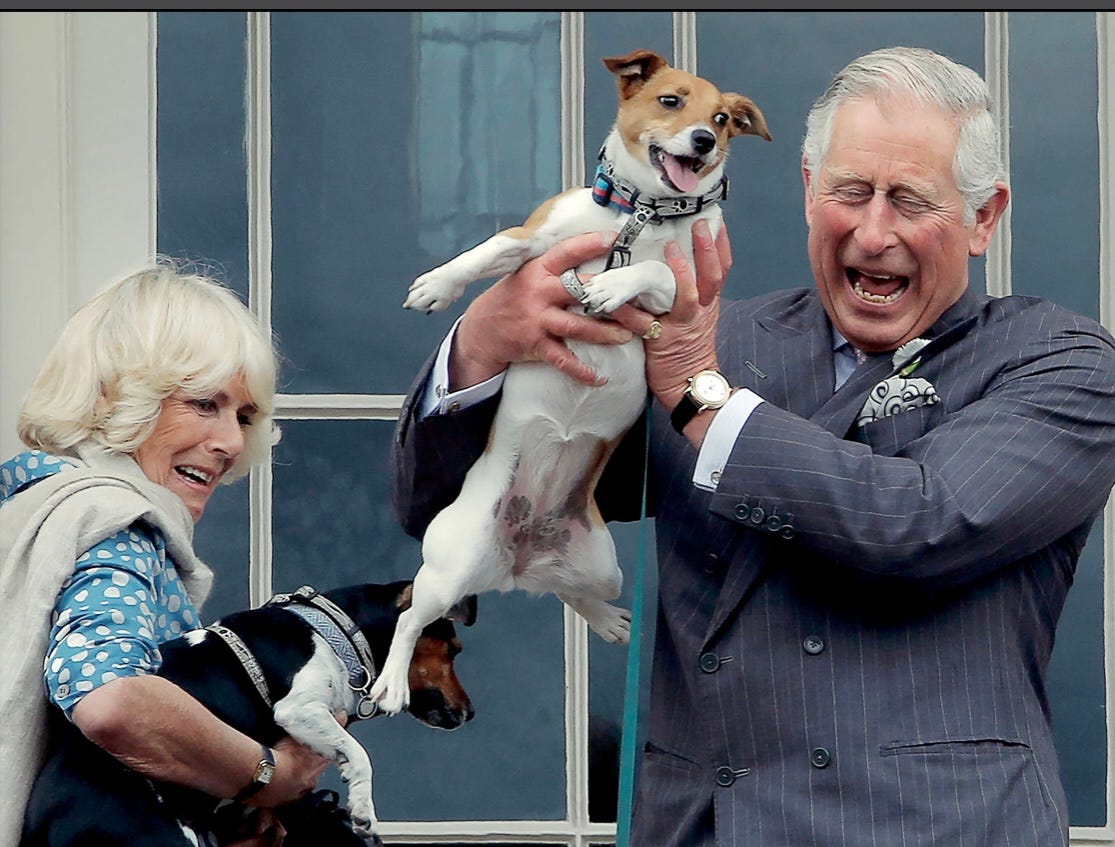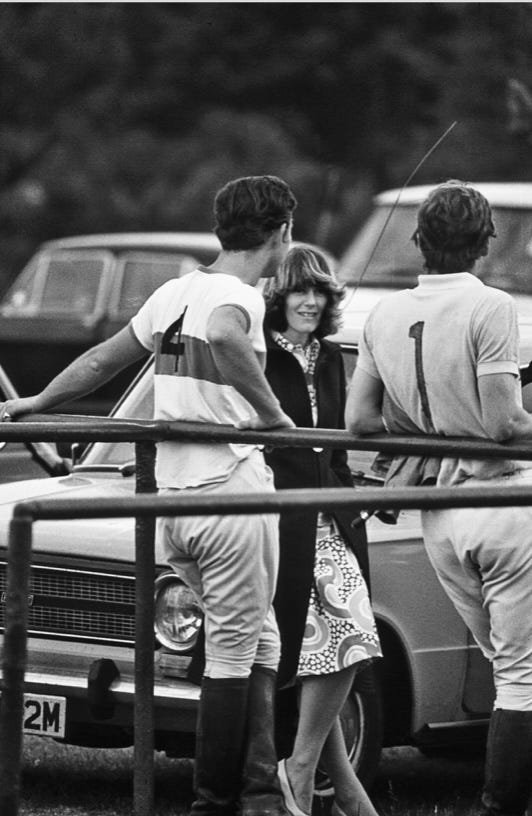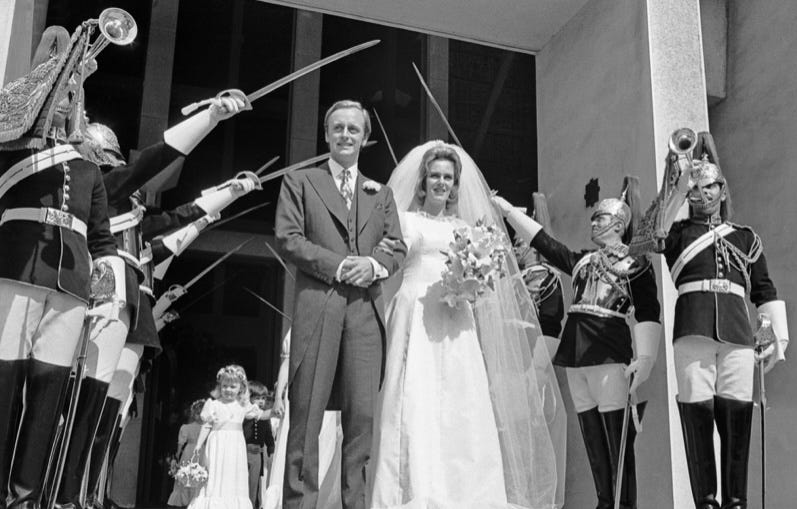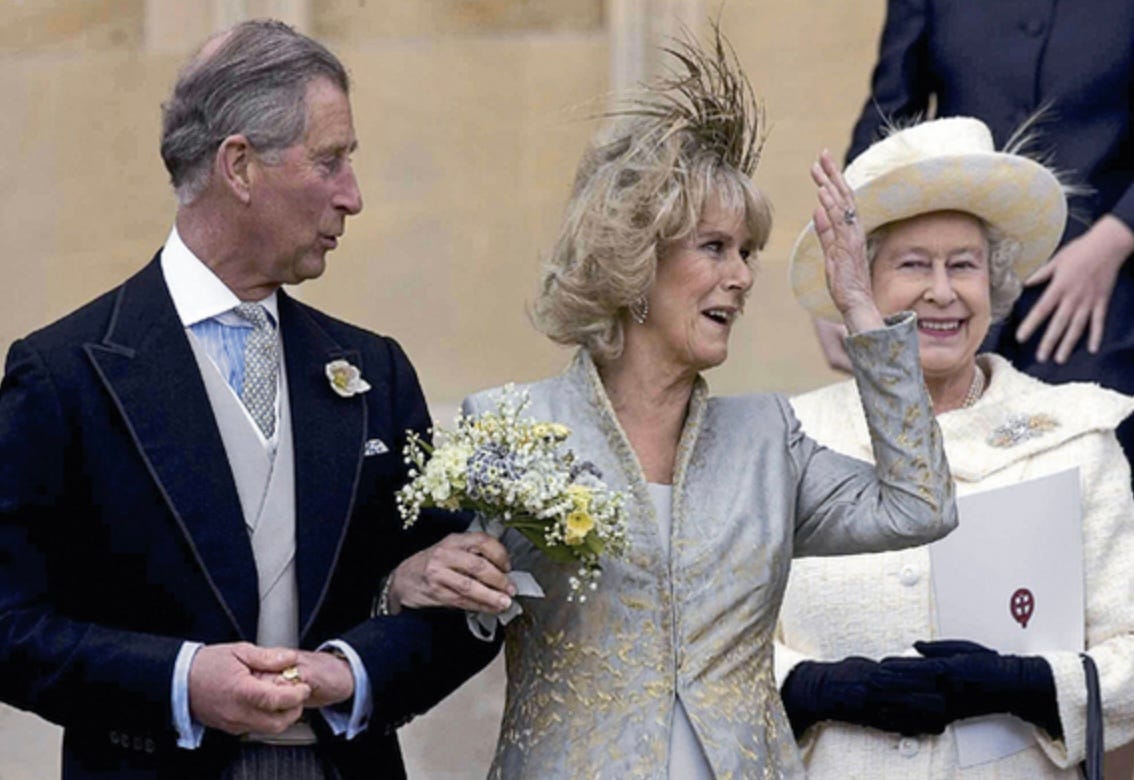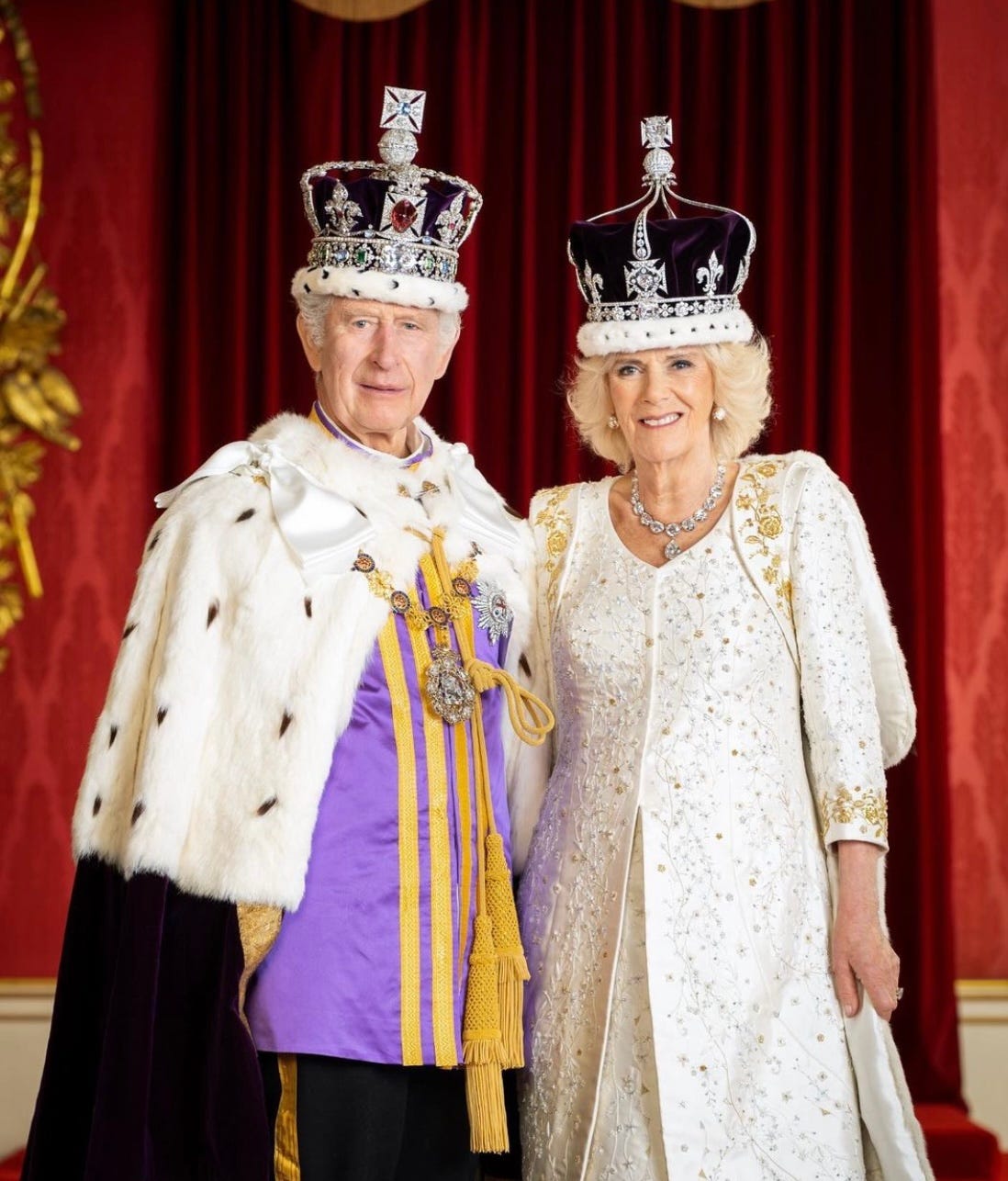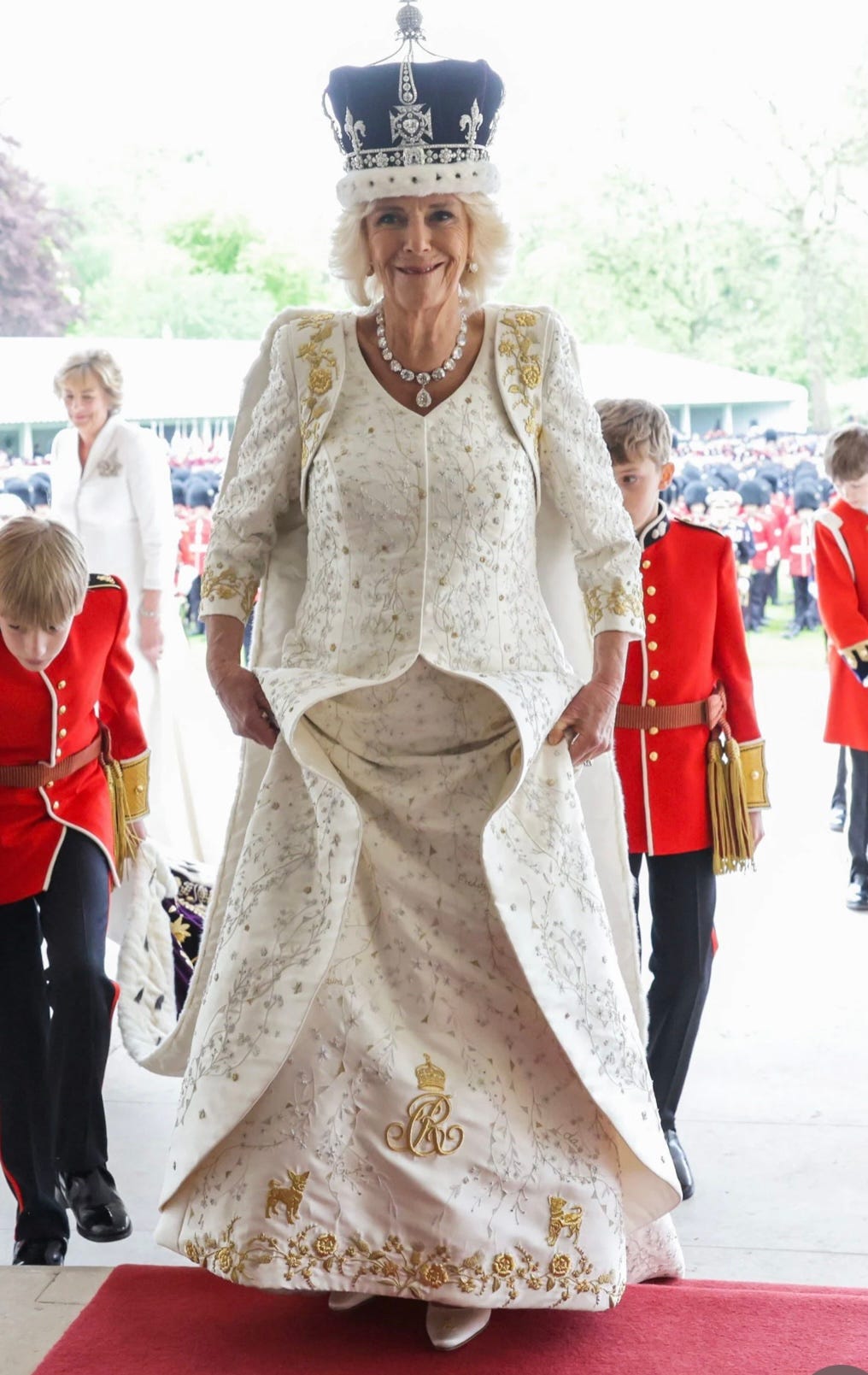
What lingers in my mind following the magnificent Coronation at Westminster Abbey on Saturday May 6th, 2023, is the extraordinary rise of the woman who caught the heart of Prince Charles in the early summer of 1972 after he returned to Britain from his first tour in the Royal Navy—not, as is often wrongly reported, in 1971 when he was undergoing rigorous military training,
Twenty-three-year-old Prince Charles and Camilla Shand—about to turn twenty-five— were introduced by his former girlfriend, Lucia Santa Cruz, the daughter of a Chilean diplomat. Lucia was a neighbor of Camilla at the Cundy Street Flats around the corner from the Victoria bus station—an apartment complex owned by the Duke of Westminster offering low-cost housing for family, friends, and retired royal staff. (It’s now being demolished for a luxury development). “The prince was coming for a drink, and I asked her to come up,” Lucia told me.
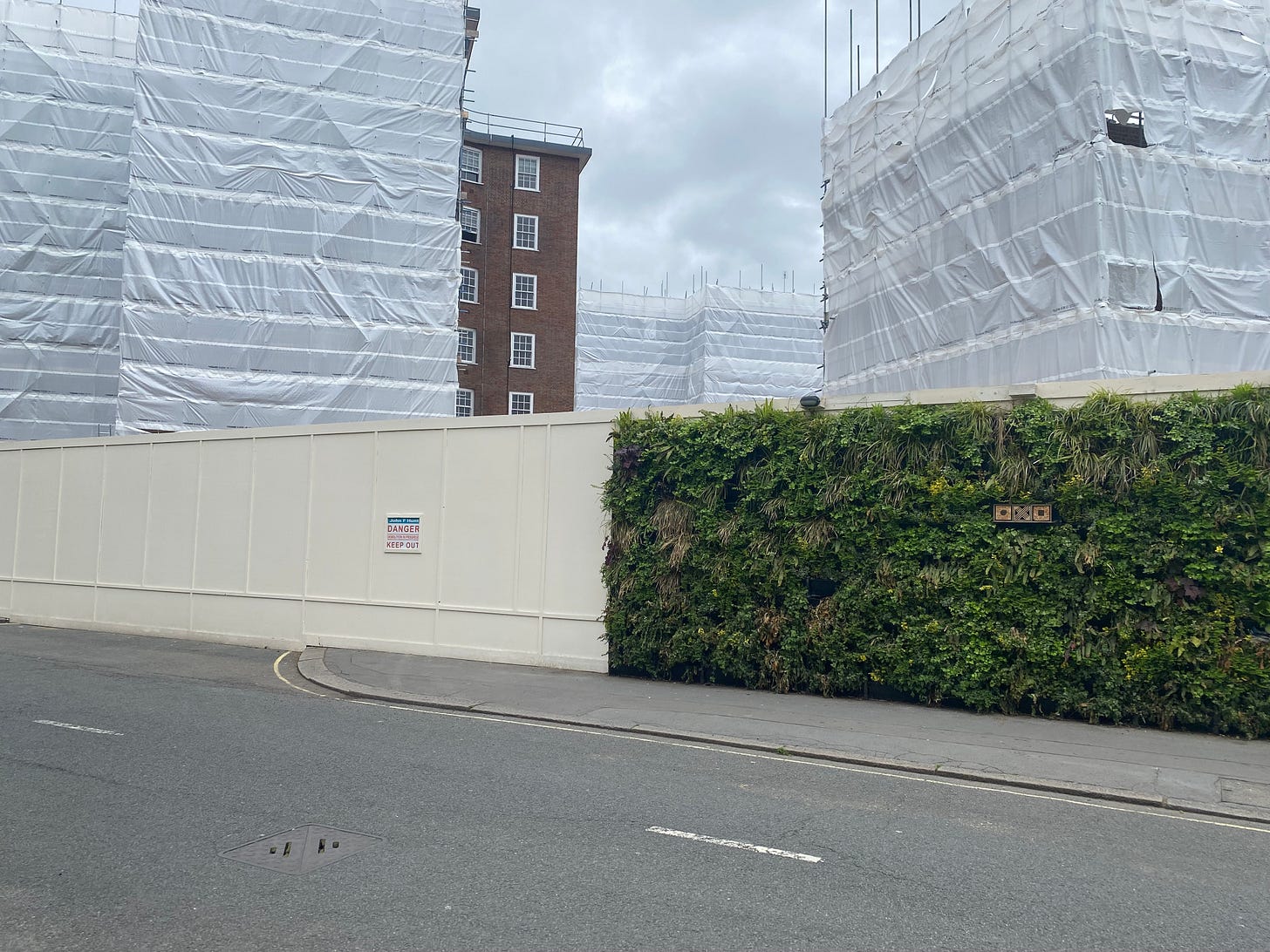
For six years Camilla had been in love with cavalry officer Andrew Parker Bowles, a polo playing friend of Charles. Although he had a reputation as a womanizer, Camilla “was absolutely potty about him,” her longtime friend Sir Patrick Beresford told me. Conveniently, Andrew was deployed in July 1972 to Northern Ireland and Cyprus for six months, which allowed Camilla to have a fling with her new royal admirer.
Charles was drawn to Camilla’s vivacity, down-to-earth irreverence, and affectionate nature. She was sexy, with a husky, ginny voice. Rupert Hambro—a handsome scion of a prominent banking family— had dated Camilla before she met Andrew. He told me a crucial feature of her appeal was that “Prince Charles would call, and she would always take his calls. She always listened.” The prince was insecure, and she boosted his confidence.
By the autumn of 1972, Charles “felt that she could be a friend and companion to love and cherish.” She, too, grew more serious about him, but as her friend Charles Benson recalled, the shadow of Andrew was still “looming large over her. He was a very attractive man, and I believe she probably just found him too much of an influence.”
Charles returned to sea duty in early January 1973. Under pressure from the Parker-Bowles and Shand parents, Andrew finally proposed. He and Camilla were married that July, and Charles wrote to a friend: “I suppose the feeling of emptiness will pass eventually.” A month later the newlyweds spent four days with the Queen Mother—a friend of his father Derek--at her Castle of Mey in northern Scotland.
But Camilla did not disappear from Charles’s life. On the polo circuit he encountered the Parker-Bowleses, and he took up foxhunting at the Duke of Beaufort’s Badminton estate, Camilla’s favorite hunting haunt. Charles was chummy enough with Andrew and Camilla that they asked the prince to be one of seven godparents to their first child, a son named Thomas Henry Charles. The Prince of Wales attended the christening and reception afterward at the Officers Mess in Knightsbridge Barracks in December 1974.
Camilla and Andrew had one more child, a daughter born on New Year’s Day in 1978. By then Camilla had given up on Andrew’s persistent infidelity and later that year secretly rekindled her romance with Charles. Word nevertheless reached the Queen that her son was involved with a married mother of two. Both she and the Queen Mother quietly let it be known that Camilla should not be invited to any royal events.
When Charles married Lady Diana Spencer in 1981, he ended his romance with Camilla, although they remained in intermittent contact—through hunting with the Beaufort and his godfather duties. It was only after Charles and Diana’s marriage had “irretrievably broken down” in 1986 that he resumed his intimacy with Camilla. (For her part, Diana had affairs with her bodyguard Barry Mannakee and James Hewitt, a cavalry officer.) Charles and Camilla met mainly at his Highgrove estate in Gloucestershire and her home nearby, Middlewick House, where one of the prince’s retainers regularly delivered notes, packages, and flowers that Charles picked from his garden.
Charles and Camilla continued their clandestine affair until the 1990s when Diana exposed it to the world with Andrew Morton’s Diana: Her True Story followed by her widely publicized interview on the BBC’s Panorama in which she famously described “three of us in this marriage.”
The tabloids and public opinion turned sharply against Camilla, who was compelled to hide in the homes of her sister Annabel and her close friends. Even after they were both divorced in 1996, Charles and Camilla couldn’t risk being seen together.
The prince’s top advisers launched “Operation PB,” a campaign to bring Camilla out of the shadows and rehabilitate her image. It began in April 1997 with an official photograph of her as the new patron of the National Osteoporosis Society, a commitment prompted by her mother’s suffering from the disease.
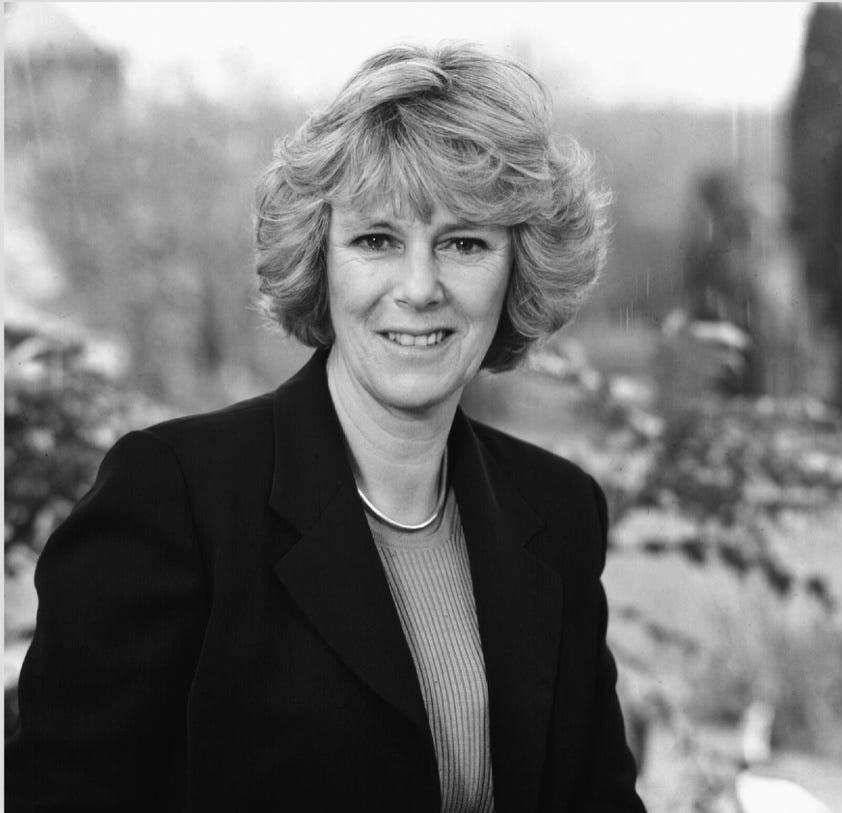
The death of Diana, Princess of Wales in August 1997 drove Camilla underground yet again. She and Charles spoke regularly on the phone and reverted to cloak-and-dagger encounters at their friends’ country estates.
Gradually Camilla began appearing at private events with Charles. She started keeping belongings and spending time openly at Highgrove and Charles’s London residence in St. James’s Palace, where she sneaked cigarettes with Robert Higdon, a fundraiser for Charles’s charities, and occasionally tripped the fire alarm.
Julia Cleverdon, one of Charles’s longest-serving advisers, told me a revealing story about how Camilla kept him grounded. They were spending a weekend at Highgrove when Cleverdon arrived to accompany him to a charity golf tournament where he would receive a million-pound check for his biggest charity, The Prince’s Trust. Charles was “cross as two sticks” about interrupting an enjoyable day in his garden. To Cleverdon’s surprise, Camilla put her foot down. “Look, come on,” she said. “Who else can go for forty-five minutes in a helicopter? You’ll be back here in time for tea. And to collect a check for a million pounds? I wish I was being paid that daily rate.”
Finally, in January 1999, after elaborate choreography with the media, Charles and Camilla were photographed together for the first time. “The fuse has been lit,” proclaimed one tabloid reporter, and it “will one day end in marriage.”

The American patrons of Charles’s charities were among the earliest outsiders to welcome Camilla. The comedian Joan Rivers told me that “the minute I met her I got what she was about, which is full of fun, a wicked sense of humor. She was someone who could be rowdy with him and silly with him and normal with him. She could pull him in a closet and give him a kiss.”
Camilla tested public opinion in the autumn of 1999 when she flew by Concorde to New York. She toured the New York Academy of Art—a particular interest of Prince Charles, who admired the academy’s graduate program in traditional painting, drawing, and sculpture—and she saw a performance of Cabaret. She shrugged off the swarming paparazzi, saying, “You have to remember to always smile.”
At a luncheon hosted by Brooke Astor, the ninety-seven-year-old doyenne of New York society, Camilla met a carefully selected group of movers and shakers. She politely laughed when her hostess indiscreetly remarked: “Your grandmother would have been proud of you. You’re keeping this mistress business in the family”—a reference to Camilla’s great-grandmother, Alice Keppel, who had an affair with Charles’s great-great-grandfather, King Edward VII.
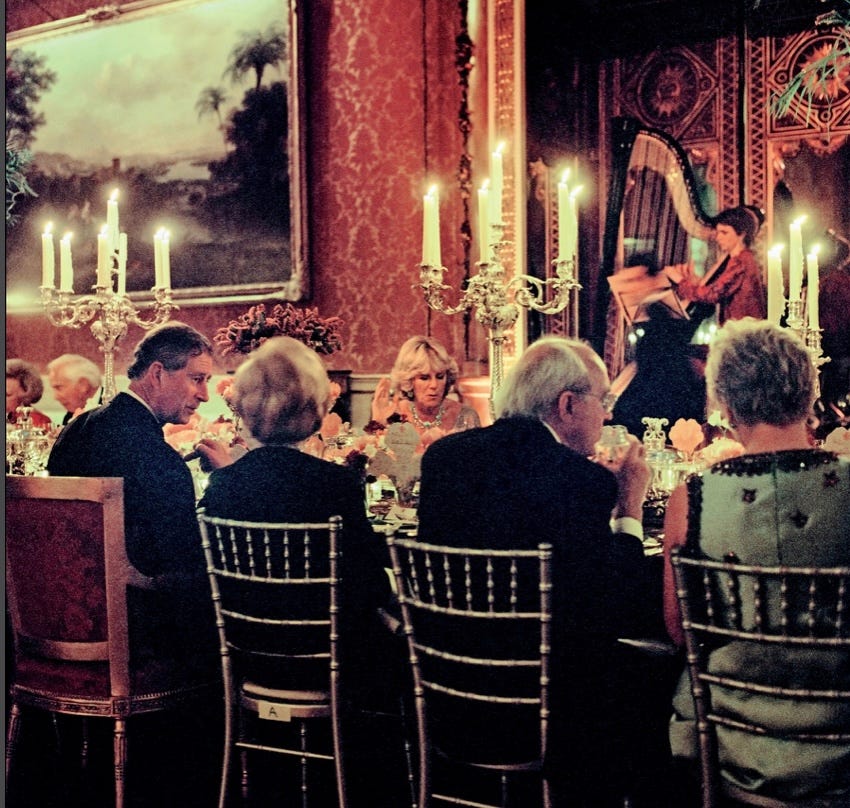
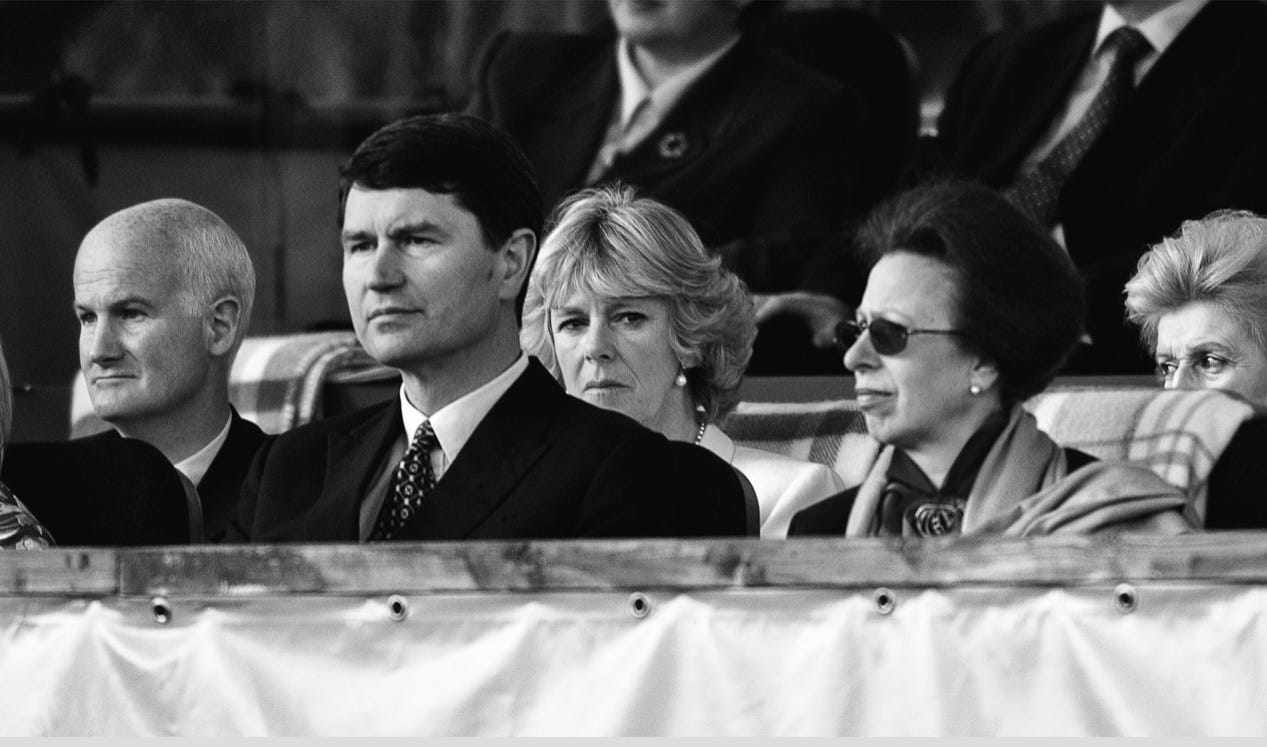
Throughout the early aughts, Camilla maintained a sphinxlike silence as Charles and his advisers mapped out a path to the altar. “She keeps her private life private,” recalled Henry Koehler, an American artist. Once when Koehler was visiting her in the country, “she said to me, `Don’t be surprised if you are sitting on the loo and you see glints in the woods. It’s the paparazzi with long lenses. If you want a towel, I’ll put one up for you.’”
The major turning point in Camilla’s life was her marriage to Prince Charles on April 9, 2005. By then, the Queen understood that Camilla made the future king happy, so she and her advisers devised an elegant solution for two divorcees: a civil ceremony followed by a service of prayer and dedication at St. George’s Chapel in Windsor Castle. At the reception afterward, Charles’s mother toasted the couple and said, “My son is home and dry with the woman he loves.”
Yet the notion of “Queen Camilla” sparked strong resistance. Palace officials tried to avoid potential controversy by announcing that she would instead be called “Princess Consort” when Charles took the throne. The title was both unprecedented and ill-advised. By law and custom, Camilla was permitted to have the same title held by the wives of previous kings. It wasn’t until Queen Elizabeth II reached the milestone of seventy years on the throne in February 2022 that she stated her “sincere wish” that her daughter-in-law should be the Queen Consort.
Even then, the controversy lingered after Charles’s accession that September. Would she indeed be known as Queen Camilla? As Archbishop of Canterbury Justin Welby anointed her and gently placed a crown on her head in Westminster Abbey on May 6th, 2023, all doubts vanished. She was every inch Her Majesty Queen Camilla.




